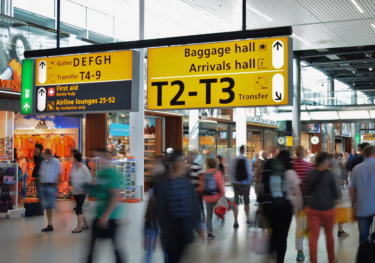Beyond assumptions – the dynamics of climate migration
Millions of people have already been displaced because of environmental shocks, but many aspects of climate migration remain poorly understood. This confusion has led to oversimplified assumptions about its causes and effects – in reality, it’s more complicated and has many nuances.
What you will learn:
- One of the most common assumptions about climate migration is that migration is directly caused by climate change. Truthfully, it’s hard to directly link the two. However, environmental factors can exacerbate the various economic, political, and social reasons why people emigrate – functioning as a threat multiplier.
- Another assumption is that migrants from the global south will flood the north, which might be better equipped to withstand climate shocks. This would be hard to do as most climate migrants don’t have that capacity and usually move short distances.
- Another oversimplified assumption stems from the fear climate migrants will disrupt labour and housing markets. It’s true that it will take some time for economies that welcome migrants to adjust. But risks can be minimised if properly managed. Migrants need support to adjust and assimilate so they can complement and contribute to the economy and domestic workforce.
- Climate migration today may be different to that of the future. Should we fail to mitigate climate change and reach tipping points, the scale of movement will be unprecedented. With all its nuances, this makes predicting climate migration patterns even more complex, so we avoid making explicit assumptions in our high temperature scenarios.
Tags:
Related Content

Post
Global sustainability scramble ushers in a new era for South Africa
Africa's mineral riches are central to its history. However, the race to combat climate change has reignited interest in the continent given its vast deposits of critical minerals. Southern Africa, in particular, has received much attention with the development of several key transport corridors with the almost explicit purpose of scaling up the availability of these minerals on international markets. We set out to investigate the economic potential of the region in terms of its critical minerals while taking into consideration what the establishment of these corridors means for the regional economy.
Find Out More
Post
The long-term benefits of more immigration for the US
Immigration has become the key driver of population growth, and that trend will only accelerate. Based on our forecast, immigration will account for close to 100% of population growth by 2050.
Find Out More
Post
Understanding business sustainability in the context of environmental thresholds
When business leaders think of the “thresholds” that hold meaningful consequences for their organisations, ones affecting corporate tax or regulatory requirements might be the examples that first come to mind. However, another kind of threshold deserves businesses’ more immediate attention – the environmental thresholds at which abrupt and potentially irreversible changes to the Earth and its systems occurs.
Find Out More
Post
Sustainability-related finance disclosures are a win for the economy
Outside the financial sector, people might be forgiven for dismissing the Sustainable Finance Disclosure Regulation's (SFDR) latest public consultation as one more addition to the European Commission’s myriad of regulatory measures and reforms.
Find Out More